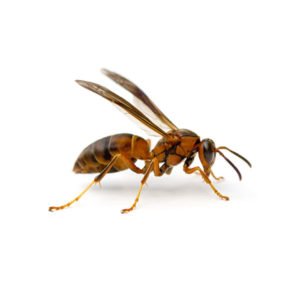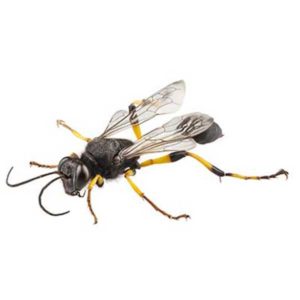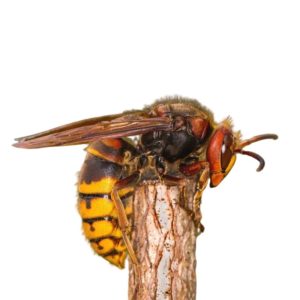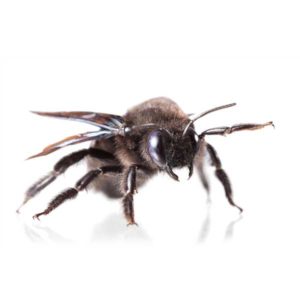Bald-Faced Hornets in the Pacific Northwest
Bald-faced hornets are a common and aggressive pest. Though bald-faced hornets greatly resemble their yellowjacket relatives, they can be told apart by the ivory-white markings on their faces. These flying insects are relatively large and known for combatively defending their nest if they sense a threat. While bald-faced hornets are vital to the environment, they can cause destruction to homes by making paper nests in attics, structural voids, and landscaping features.
Bald-Faced Hornet Habitat
Bald-faced hornets typically build their large paper nests near places that humans regularly occupy. Their egg-shaped nests are grey in color and may grow up to 24 inches in length and 30 inches in diameter. Bald-faced hornets build their nests in spring and early summer by chewing on natural wood fibers. Most nests are built in trees, playgrounds, or along structures such as eaves or light posts. When completed, bald-faced hornet nests are about the size of a football or basketball.
Bald-Faced Hornet Behavior, Threats, or Dangers
Bald-faced hornets are stinging insects, and their venom can result in pain and swelling for about 24 hours. People with an allergy to bee stings may have a similar reaction if stung by a bald-faced hornet. During the day, these insects can often be found scavenging in trash bins or looking for food consumed outdoors. Bald-faced hornets also eat ripe fruit in gardens and farms. During fall, cooler temperatures and diminished food sources cause these wasps to seek warm shelter, which may prompt them to invade homes.
Similar to many stinging insects, bald-faced hornets will sting if their nest is in danger or if they feel threatened. If a nest is found near human populations, it is crucial to contact an expert hornet control company to safely remove the nest or colony.





